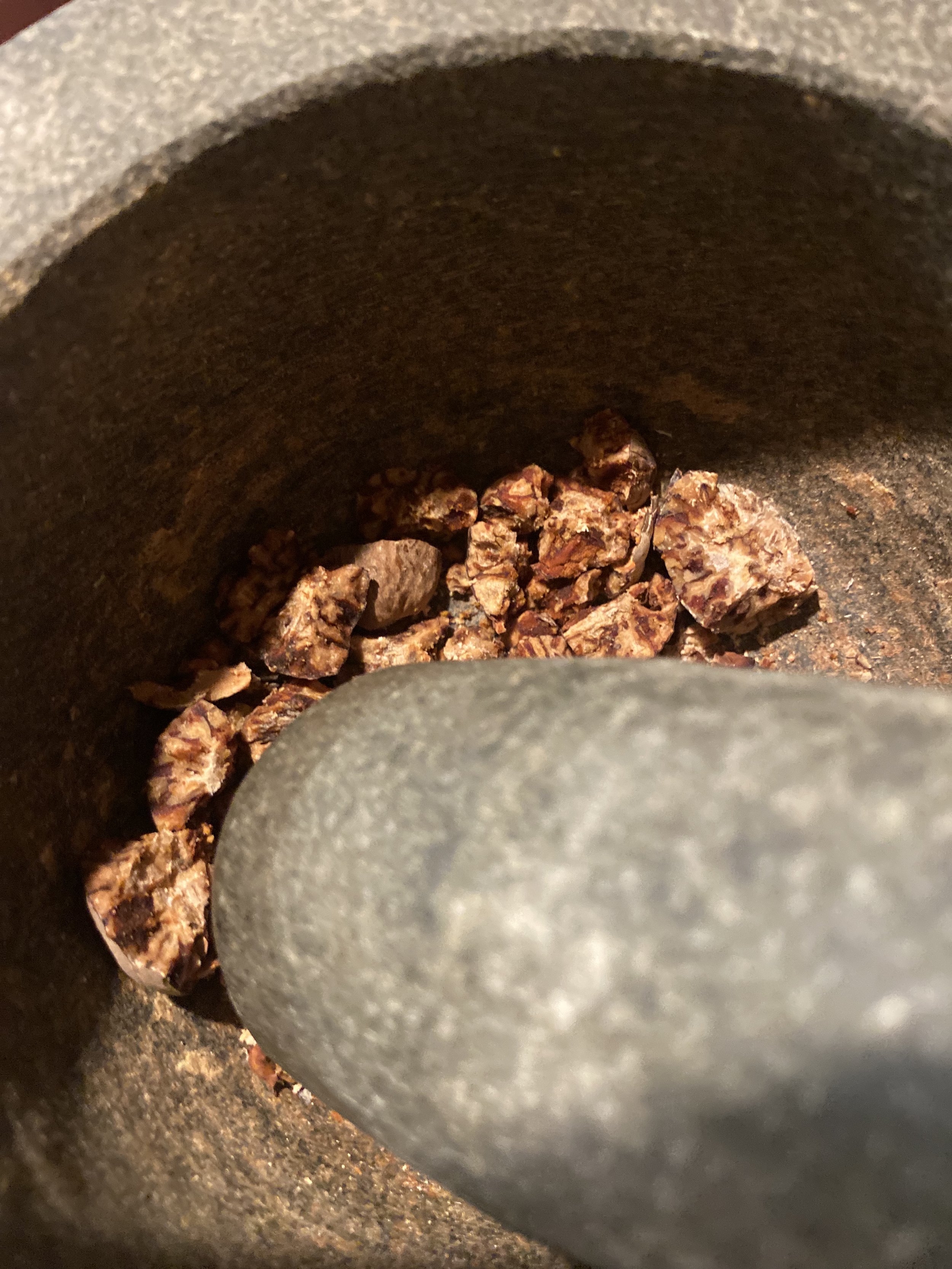Nutmeg: a wonderfully warming nighttime sleep aid.
Someone recently asked me what would be my favorite herb to help with sleep for this time of year, and while I do not do well with ‘favorites’, I do think my best answer to this would be nutmeg. It’s warming quality helps to balance the cold of winter, but I especially love it’s aromatic and calming effects. In Ayurveda, it is used to calm the mind from anxiety and help with insomnia, and there is some current research to support this.
My favorite bed time preparation is as a warmed milk. I will often add it to my golden milk or make a warmed milk with nutmeg, cinnamon and cardamom. You don’t need much, 1/4 tsp or 500mg is enough.
Drinking nutmeg spiced milk is like warm cozy blanket. However, it also has other benefits, supporting sluggish digestion, and assimilation. It also relieves cramping in the digestive tract, I find this antispasmodic action especially useful with vomiting and diarrhea. When a person has been vomiting, and the dry heaving begins, I find that 1/4 tsp of nutmeg in water or yogurt will stop it. There are studies on mice that show it to be beneficial to the gut microbes, support lipid metabolism, and non-alcoholic fatty liver disease.
The difference between buying powdered nutmeg and grinding it fresh daily is incomparable in my opinion. When buying the nutmeg whole, it can be easily crushed in a mortar and pestle or use a fine grater on the whole nutmeg, and grate it directly into the milk.
*it’s important to note that one can overdose on nutmeg, higher doses can cause psychotropic effects and above that, it can be toxic, however these are at doses of over 5 grams, about 1 tsp.
References:
The Yoga of Herbs, Lad & FrawleyDravyaguna Vijnana, Dr. Gyanendra Pandeyhttps://pubmed.ncbi.nlm.nih.gov/31787815/https://sci-hub.se/10.3390/nu12092507https://pubmed.ncbi.nlm.nih.gov/35565666/
whole nutmegs in a mortar and pestle.

